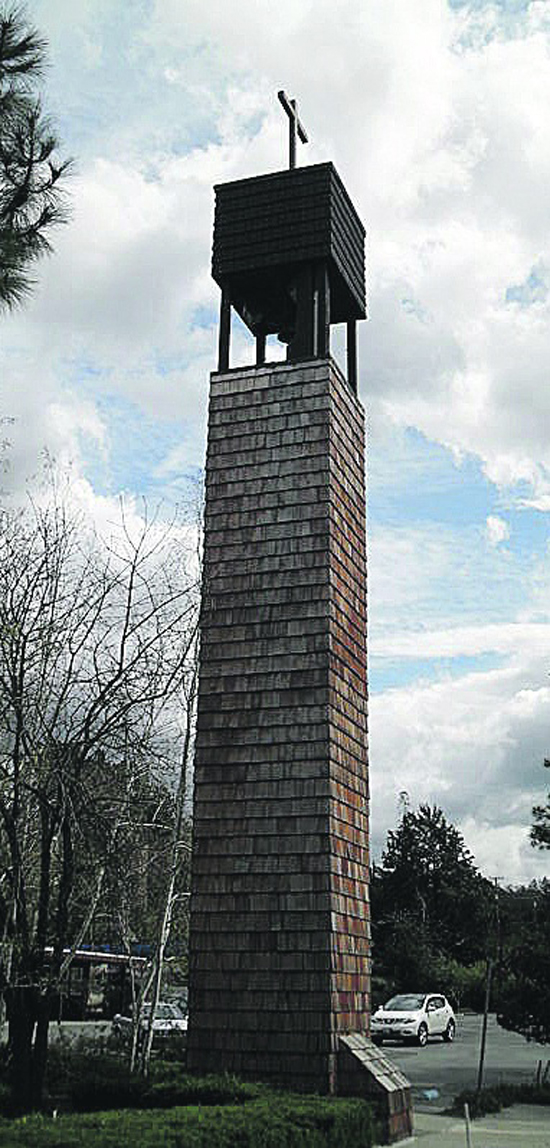
| ||||||
After a false start with an unpopular fake tree design on Glenside Drive, T-Mobile proposed locating transmission antennas within the St. Anselm's bell tower and increasing its height, currently at 48 feet, to 56 feet.
In order to lengthen the bell tower to accommodate their antennas, T-Mobile needs a land use permit and a variance for the height increase. Although historically height restrictions, especially in the downtown, have been a lightning rod of controversy, height limitations do not apply to belfries.
The old adage - where you stand depends upon where you sit - became clear as three distinct factions arose. Reverend John Sutton of St. Anselm's supports the project, "We have seen a downturn in pledges - this would help us a great deal," he stated. Other church members came forward to illustrate the good works that the church performs along with supporting a number of charities.
Neighbors in the Michael Lane Homeowners Association were less than thrilled, citing "significant aesthetic impacts," said Abby Fateman, "we are losing views and losing property value." In their opinion, the tower is already very prominent and there is concern about negative health impacts associated with cell towers, along with the perception that health fears negatively impact property values.
Adding to the debate, the Michael Lane Homeowners Association wants T-Mobile to contribute to a traffic calming project along Michael Lane as a means to offset project impacts. Planning Commissioners did not see a "nexus" or connection between the two.
A T-Mobile representative pointed out the benefits to the city - notably improved wireless coverage, and keeping a financially viable church in the community to continue serving its flock. She described a willingness to address potential health concerns with regular compliance reports to the FCC and potential increased seismic safety, that the building Inspection Department may require to increase the height.
While church supporters and neighborhood residents are free to express all of their concerns, the Planning Commission is barred from taking into account monetary or heath impacts of the proposal when making a decision. The FCC regulates telecommunications facilities and their emissions - this factor is not within the jurisdiction of the Planning Commission.
Still, scale and proportion of the tower were issues. Calling it a "rectangular silo - no offense to the church," Commissioner Rick Humann was in favor of sending the project to the Design Review Commission for it to address cosmetic issues, adding that this might ease neighbors' concerns. Commissioner Mark Mitchell agreed, noting a "need to fine-tune the aesthetics."
Although a final decision was slated for last week's meeting, Commissioners voted to send the project to the Design Review Committee. After the project passes muster with Design Review it will come back to the Planning Commission for final action.
Ultimate approval will depend on a majority of Planning Commissioners. Two clearly expressed their point of view, "Ditch the industrial look to be satisfactory," suggested Vice Chair Jeanne Ateljevich. Commissioner Chastain was also doubtful, "I don't have faith that the DRC can make it better."
Reach the reporter at:
Copyright
